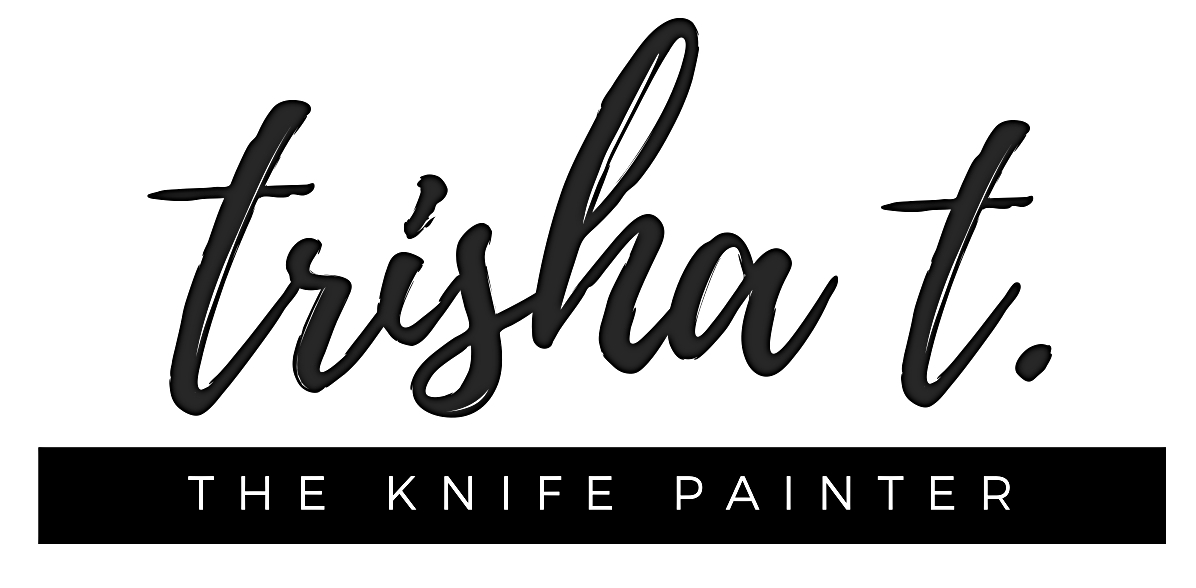'untitled' abstract by Trisha Lamoreaux
The Little Details
The importance of details can be dissected in writing, parenting, relationships, business, politics and everywhere in between. In every aspect of my life the magic happens in the details. It can be a quick "Hello" and smile from a stranger or Lucky Charms in bed with my kids. The bulk of life is pretty mundane for most of us; go for a run, pick up the house, go to work, groceries, fold the laundry, pay the bills etc. But small and simple things make the biggest difference.
Art is no exception. The details are those quiet things that speak to each of us. For some of us it's the lighting. For others it's the dynamics of the color palette or the subject or style of a work of art. For me it's all about the texture. I love messy texture. For those of you that read my blog regularly, this isn't surprise.
I'm a texture junky what can I say?
Recently, I've been experimenting in the studio with textures and even went back to some older inventory to review textures. I'm loving the way the round knife creates the depth of a flower petal. If you were close enough you could pinch the edges with your fingers. I also love how easy it is to create water with a knife. The reflection and movement of water jumps off the canvas almost effortlessly with a straight edge knife. The puff of a cloud or the gradient in the sky is just a stroke and the direction you hold the knife in your hand.
I was once asked what knife painting is like. After some thought, I realized it's a lot like frosting a cake with really flexible frosting. If you can frost a cake then you can paint with a knife. Give it a try but here's some helpful hints for painting your own palette knife painting:
1. Choose the right size.
Your going to use A LOT of paint. Start with a small canvas if you don't have a large amount of paint. The bigger the canvas the more paint you're going to use.
2. Variety of knives.
When you're trying to decide what kind of knife to buy remember to get several different varieties. Rounded edge are great for leafs and flowers. Angled edges are good for straight lines and smaller knives are great for precision and on a smaller canvas.
3. Paper Towels.
Mix. Load. Apply x 2. Wipe.
Get a bunch of paper towels. I typically go through 2 - 3 rolls of paper towels per painting. You usually only get 2 - 3 swipes of the knife and then have to wipe off the paint and re-load. Less is more with knife paintings. You'll end up with mud if you keep messing with it.
4. Impasto Gel.
To stretch the paint and aid the drying process get an impasto gel but make sure you paint in a vented room because it's really smelly.
5. Trust your placement.
The first placement is usually right. Don't second guess yourself. Study the lines you're trying to create first and then apply the paint.
6. Rock some good tunes.
Music is a must. Just sayin...
Good luck!!
If you have any thoughts please leave a comment!
*How to paint with a palette knife, tutorial, guide, details, close up, texture
What is impasto? And what is an impasto artist?
Thanks to our friends at wikipedia:
Impasto
This article is about the painting technique. For the pottery type, see Impasto (pottery).
In English, the borrowed Italian word impasto most commonly refers to a technique used in painting, where paint is laid on an area of the surface (or the entire canvas) very thickly, usually thickly enough that the brush or painting-knife strokes are visible. Paint can also be mixed right on the canvas. When dry, impasto provides texture, the paint appears to be coming out of the canvas.
The word "impasto" is Italian in origin; in that language it means "dough" or "mixture"; the verb "impastare" translates variously as "to knead", or "to paste". Italian usage of "impasto" includes both a painting and a potting technique (see section below on impasto pottery). According to Webster's New World College Dictionary, the root noun of impasto is pasta, whose primary meaning in Italian is paste.
Oil paint is most suitable to the impasto painting technique, due to its thickness and slow drying time. Acrylic paint can also be impastoed. Impasto is generally not possible inwatercolour or tempera without the addition of thickening agent due to the inherent thinness of these media.
Impastoed paint serves several purposes. First, it makes the light reflect in a particular way, giving the artist additional control over the play of light on the painting. Second, it can add expressiveness to the painting, the viewer being able to notice the strength and speed applied by the artist. Third, impasto can push a painting into a three dimensional sculptural rendering. The first objective was originally sought by masters such as Rembrandt and Titian, to represent folds in clothes or jewels: it was then juxtaposed with more delicate painting. Much later, the French impressionists created entire canvases of rich impasto textures. Vincent van Gogh used it frequently for aesthetics and expression. Abstract expressionists such as Hans Hofmann and Willem De Kooning also made extensive use of it, motivated in part by a desire to create paintings which dramatically record the "action" of painting itself. Still more recently, Frank Auerbach has used such heavy impasto that some of his paintings become almost three-dimensional.
Because impasto gives texture to the painting, it can be opposed to flat, smooth, or blending techniques.











